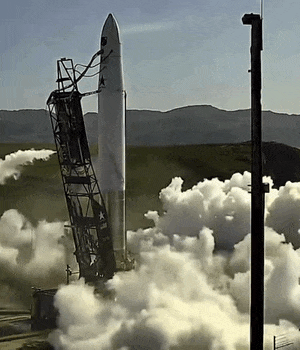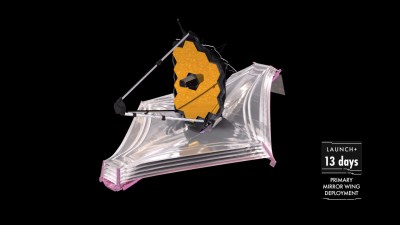Let’s launch into a round-up of stories that are out of this world, as we take a look at what’s happening in the realm of space exploration.
Ten Billion Dollars For A Telescope? Don’t Drop It!
Perhaps the most highly anticipated space mission of the moment is the James Webb Space Telescope, an infra-red telescope that will be placed in an orbit around the Earth-Sun L2 Lagrange point from which it will serve as the successor to the now long-in-the-tooth Hubble telescope. After many years of development the craft has been assembled and shipped to French Guiana for a scheduled Ariane 5 launch on the 22nd of December. We can only imagine what must have gone through the minds of the engineers and technicians working on the telescope when an unplanned release of a clamp band securing it to the launch vehicle adapter sent a vibration throughout the craft. Given the fragility of some of its components this could have jeopardised the mission, however after inspection it was found that no damage had occurred and that space-watchers and astronomers alike can breathe easy.
 In private space news, you may remember Astra from their launch at the end of August which hovered dramatically sideways due to a fault before ascending, and which was terminated by launch control due to insufficient remaining fuel to enter orbit. There’s some good news from that quarter, as their next launch succeeded in reaching orbit carrying a test payload for the United States Space Force.
In private space news, you may remember Astra from their launch at the end of August which hovered dramatically sideways due to a fault before ascending, and which was terminated by launch control due to insufficient remaining fuel to enter orbit. There’s some good news from that quarter, as their next launch succeeded in reaching orbit carrying a test payload for the United States Space Force.
A War Of Junk, Or A War Of Words?
Meanwhile politics have swirled around the ISS like a cloud of orbital junk, as the risk of space debris blamed on a Russian anti-satellite weapon test caused the postponement of a spacewalk, with the Russians countering that the junk was in fact parts from a 1994 American launch. As a backdrop there’s the ongoing saga of the hole discovered in a Russian module back in 2018, with the Russians now threatening legal action against the NASA astronaut Serena Aunon-Chancellor who they suspect to have drilled the hole herself. Who knew that low earth orbit could contain so much intrigue!
If fraught orbital politics leaves you hot under the collar, maybe you need to read something that’s more normal fare for Hackaday. NASA have published the 2021 update to their State-of-the-Art Small Spacecraft Technology report. It’s a long document, but forms a fascinating read whether you’re designing spacecraft or simply have an interest in the field. Think of it as an accessibly-written textbook that goes into significant detail on all aspects of small spacecraft design, and settles down to be enthused about cubesats and their relatives.

On the subject of spacecraft design, we’re guessing many of you have a keen eye for space history and the design of rockets past. It’s possible that you’ll have seen more about American craft than their Russian competitors, but here to plug that gap is a comprehensive guide to the genesis of Soviet rocket engines. It covers everything from the first flights of the 1950s to the never-flown N1 Moon rocket, the Buran shuttle, and even the Russian engines used today to power the American Atlas V.
The big news to look out for over the coming weeks will be the 22nd of December’s James Webb Space Telescope launch, and then the nail-biting moments as the craft unfolds itself and extends its sun shield. It’ll take about a month to reach its orbit, but thereafter there will be about six months of instrument set-up and calibration before we will see whatever stunning discoveries it’ll make. We know they’ll be spectacular, so let’s hope the mission goes as planned.















The James Webb Paperweight Telescope is the king of teasing delays. I wouldn’t be surprised if the whole rocket just exploded and somehow the data on the last few years of work on it were lost so it just needs a few more years before being relaunched.
just saw a picture of the fueling of the web telescope,absoulutely
terrifying, tables of tools,exactly the same as I used today to free up a stuck transmission in a 1962 school bus,not kidding, and the
guages and pumps were a bunch of jury rigged junk, the tools were acompanied by little labels so that must be good for a few million,and they dropped it
oopsy the explosive bolt went bang and the “clamp” ,unclamped.
sure wish they were spending as much on launch
directors as spin doctors.
Source?
https://www.instagram.com/p/CXOcKB3hCNN/?utm_medium=copy_link
I think this is what he is talking about.
Only the people who don’t know about space industry think that it’s all about high tech and shiny stuff. It doesn’t need the whaoo effect, it need to be simple, reliable.
You only see high-tech or futuristic stuff when it’s about patriotism or getting money from investors. It is usually mainly blinking led or Hollywood inspired decorum.
Don’t forget the the most reliable spacecraft is the Soyuz, almost unchanged for half a century.
Ever do this level of work? You scrounge what you can, fudge stuff and if you’re smart leave sticky notes on what you did so when the LD says your data is bogus, you can do it again and get the same results. Hard to transport the clean room and test equipment you used to build it and the assembly area never has that 91mm 5 sided spanner you need to tweak the jesus nut to precisely .05 newtons
Do notice however: no mention of testing the working function of the entire device
I loved the way Scott Manley put it: “…that the James Webb Space Telescope is ready is just a story we tell young children”.
If vibrations caused by an oopsie with the band clamp holding it to the launch vehicle could be of concern to cause damage, how could the JWT be expected to survive launch? NOAA-N Prime fell over onto the floor during testing in 2003 and was repaired. I’d expect the packed for launch JWT to be at least that tough.
You assume it was all locked off ready for launch and not in some more vulnerable pre-launch testing state.
the difference is they only get one shot at this
the web is going to the far side of the moon if something goes wrong no one is going to be able to go out there and fix it. so they want to make sure everything goes right which means lots of checking